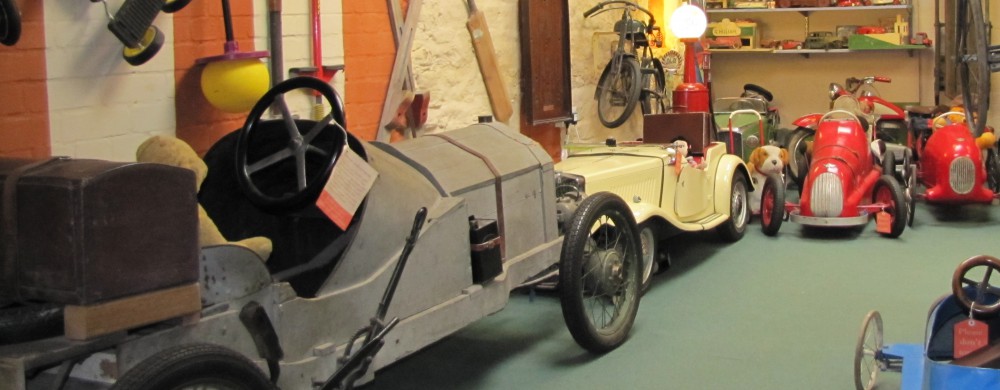Previous posts have looked at the story of the Austin Seven and the variants that evolved from that basic 1922 design. This post goes back to the very early days of the Austin Seven and the Austin Seven Chummy, a model that started life in the early 1920s.
As a route back from receivership to profitability, Sir Herbert Austin wanted to produce a small, affordable, 4-seater car that was an alternative to the motorbike and sidecar.
The first prototype of the Austin Seven was announced in July 1922, and the production version was released at the London Motor Show in November of that year.
The Chummy, believed to be so named because of the inevitable proximity of passengers (interior width is only just over 3 feet) started production in 1923.
The 4-cylinder engine started out as a 696cc unit but was soon enlarged to 748cc. Given that most small cars at that time were powered by a 2-cylinder engine, the 4-cylinder engine made for a more refined driving experience.
The ramp-up in production numbers was relatively slow with 26,000 being reached in 1929 and peaking in the mid-1930s.
Improvements were made until production ceased in 1939. In 1924, an electric starter motor was added, an ignition coil in 1927, a stronger crankshaft in 1930, a 4-speed gearbox in 1933, followed by synchromesh a few years later. At the same time power output increased from 10.5bhp in 1923 to 17bhp by 1936.
Staying with the early Chummy however, a volunteer at the Cotswold Motor Museum and Toy Collection is an experienced owner of a 1930 AE Series Chummy and has offered the following commentary on what it is like to live with an Austin Seven Chummy. Over to Jason:
What’s an Austin Seven like to drive?
It was said it was easy to drive badly but hard to drive well. The following personal reflections are based on the author’s experience.
Space – Not as cramped as it looks. The Austin Seven can accommodate two very comfortably built adults in the front and three small children on the bench back seat. However, very tall adults may have problems getting in and out. Austin Sevens were regularly overloaded. One or more adults regularly carried in the back would cause the rear of the tourer body to droop over time, as earlier cars did not have adequate support in this area. This was no longer a problem by the time the Ruby was introduced [in 1935]: it was a full four-seater.
Starting –The Austin Seven, even though it only has a six-volt electrical system, will normally start using the electric starter, though it’s not a bad idea to give the manual starting handle a few turns to get the oil circulating, especially if the vehicle has been standing for some days
Noise – The engine is fairly quiet if it is in good condition and is not really noticeable above the noise made by the gearbox, particularly the earlier ‘crash’ (no synchromesh) gearbox, which had straight cut gears. The differential also gives out a whine to a greater or lesser extent depending on how worn it is. Couple that with wind noise and the noise from overtaking traffic and earplugs become a serious consideration for the open touring cars.
Handling – One of the affectionate names for the Austin Seven is ‘the road dinghy’. This stems from the way it reacts to undulations in the road, which causes the length of one of the rear springs to increase as the car goes over a bump, giving a degree of uninvited and unexpected rear wheel steering. If the driver over-compensates for this, the car can wander a bit. Once you get used to this little quirk however, and relax, driving becomes great fun and a straight line can be maintained easily.
Brakes – It pays to anticipate with Austin Seven brakes. The front and rear brakes were not coupled until 1930, so cars had quite good rear braking operated by the handbrake and an indifferent footbrake that operated on the front wheels only. Both brakes were cable operated and the single front cable exerted its force at 45 degrees, which reduced the efficiency and caused the braking effort to increase as the steering wheel was turned. Front brakes themselves were not commonplace in 1922, so this quirk would have been overlooked by many.
With careful adjustment and regular maintenance, the front brakes can be made to lock if required, so despite the design, the modern VOSA test (MOT) is not usually a problem. The Semi-Girling braking system used on later cars, was more effective, and offered individual adjusters on the brake backplates.
Lighting – Early cars had lamps produced by CAV Ltd, mounted at the side of the windscreen. The problem with these was that the beam did not project far beyond the front of the car, so they could best be described as position indicators rather than headlights. There was also a warning in the early handbooks not to clean the electric light reflectors with brick dust [Jeweller’s Rouge?]. Later headlamps were mounted at the front of the car and gave a much-improved beam.
Spares – There are still about 7,000 Austin Sevens left. So many were built that most spares are still available from specialist dealers or clubs. Some parts, like early carburettors and body panels, are becoming more difficult to find, but overall, the situation is still amazingly good, with a wide range of new components being made in the UK and abroad.
Fun – The Austin Seven is, above all, tremendous fun to drive. It seems to make people smile when they see one on the road, and other drivers will often give a cheery wave or toot on overtaking you, even if you have inadvertently held them up!


